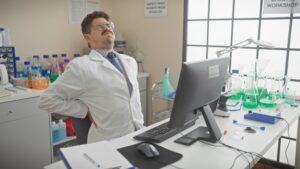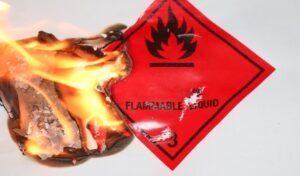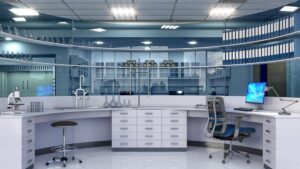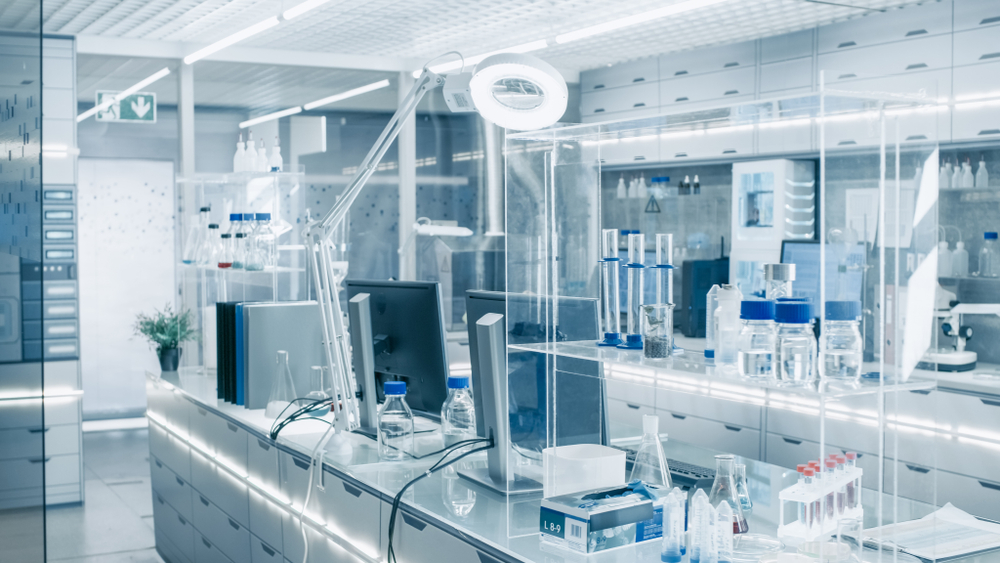
The choice of materials can make all the difference in ensuring accuracy, safety, and efficiency in scientific research and laboratory work. Among the various materials available, stainless steel is the material of choice for lab equipment across diverse industries because of its exceptional hygienic properties and unmatched precision.
Laboratories are environments where even the smallest contamination or error can have significant consequences. Whether in pharmaceutical research, chemical analysis, or clinical diagnostics, maintaining a sterile and precise workspace is of utmost importance.
Stainless steel, with its non-porous surface, corrosion resistance, and durability, offers the ideal solution for meeting these stringent demands. Its ability to withstand extreme temperatures and resist chemical reactions makes it even more reliable and indispensable in settings where precision is not just desired, but required.
In this article, we will explore how stainless steel lab equipment combines the essential elements of hygiene and precision, examining its benefits, applications, and the innovations that continue to drive its prominence in laboratory environments.
The Hygienic Properties of Stainless Steel
When it comes to maintaining a clean and sterile laboratory environment, stainless steel is a material that excels. Its unique properties make it an ideal choice for environments where hygiene is critical, ensuring that laboratories can operate safely and efficiently.
1. Corrosion Resistance
Stainless steel’s remarkable resistance to corrosion is one of its key advantages. Laboratories often deal with various chemicals and substances that can cause other materials to degrade or rust over time. Stainless steel, however, contains chromium, which forms a protective layer on its surface, preventing rust and corrosion.
This resistance is vital in maintaining the integrity of lab equipment, ensuring that it does not become a source of contamination. As a result, stainless steel helps to preserve the sterile conditions necessary for accurate and reliable experiments.
2. Non-Porous Surface
Another important feature of stainless steel lab equipment is that it doesn’t have a porous surface. Unlike materials that can absorb liquids or harbor bacteria in tiny crevices, stainless steel has a smooth and impermeable surface. This characteristic is essential for preventing the growth of harmful microorganisms, which can thrive in porous materials.
In a laboratory setting, where cross-contamination can lead to compromised results or health risks, the non-porous nature of stainless steel lab equipment plays a critical role in maintaining a clean and safe workspace.
3. Ease of Cleaning and Maintenance
Maintaining a hygienic environment in the laboratory requires regular and thorough cleaning of all surfaces and equipment. Stainless steel’s ease of cleaning makes it an excellent choice for lab settings. Its smooth surface allows for easy removal of contaminants, while its resistance to harsh cleaning agents means that it can withstand frequent sanitation without degrading.
This durability ensures that stainless steel lab equipment remains in top condition, providing a reliable and clean surface for conducting experiments. The ease of maintenance also reduces downtime and labor costs, contributing to the overall efficiency of the laboratory.
These attributes not only protect the integrity of experiments but also ensure the safety and well-being of those who work in these critical settings.
Precision in Laboratory Work
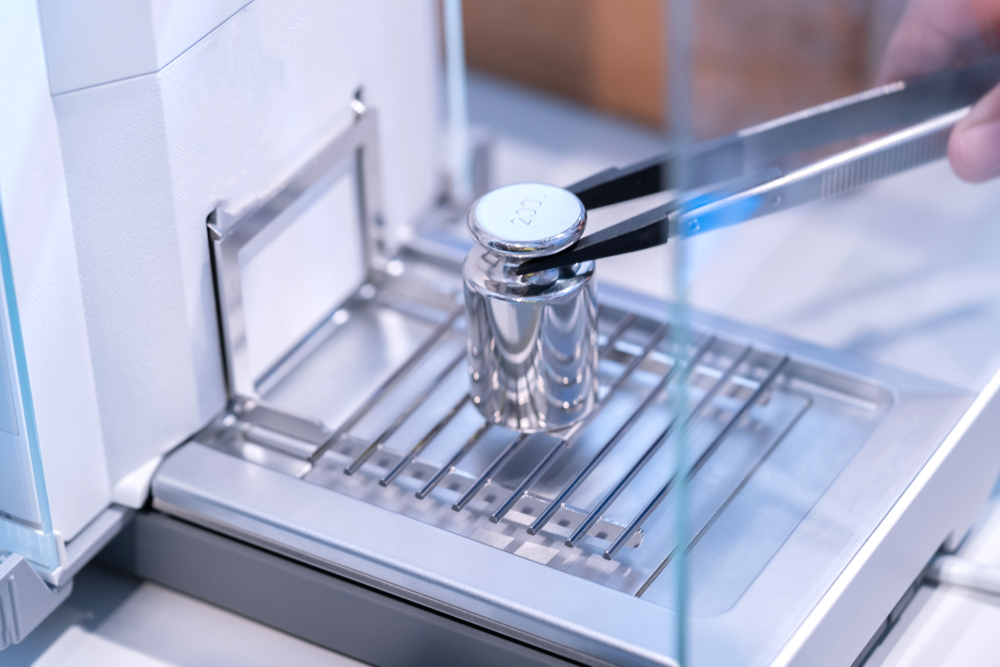
Precision is the backbone of any successful laboratory operation, where even the slightest deviation can alter results and compromise the integrity of research. The precision demanded in these demanding environments is ensured by stainless steel. Its inherent properties contribute to the accuracy and reliability that laboratories depend on.
1. Structural Integrity and Durability
Stainless steel is renowned for its strength and durability, making it an ideal material for laboratory equipment that must endure constant use and harsh conditions. The structural integrity of stainless steel ensures that equipment such as countertops, storage units, and instruments remain stable and unyielding under stress.
This stability is critical in lab environments where precise measurements and consistent conditions are necessary. Whether it’s weighing chemicals on a stainless steel scale or conducting delicate procedures on a stainless steel workbench, the material’s ability to withstand stress helps eliminate variables that could lead to inaccuracies.
2. Temperature Resistance
Laboratory work often involves processes that require exposure to extreme temperatures, whether it be in sterilization, chemical reactions, or thermal cycling. Stainless steel lab equipment’s ability to withstand both high and low temperatures without warping or degrading makes it indispensable in such settings.
This temperature resistance ensures that lab equipment remains reliable and accurate, regardless of the thermal conditions it is subjected to. For instance, in autoclaving processes where equipment is exposed to high heat for sterilization, stainless steel’s integrity remains intact, ensuring the equipment’s continued precision in subsequent use.
3. Non-Contaminating Material
Contamination is a significant concern in laboratory work, where even trace amounts of foreign substances can cause skewed results. Stainless steel is a non-reactive material, meaning it does not interact with chemicals or samples in a way that could cause contamination.
This non-contaminating property is especially important in environments like pharmaceutical labs, where purity and precision are critical. The use of stainless steel lab equipment such as containers, mixers, and reaction vessels ensures that the materials being handled remain uncontaminated, preserving the accuracy of experimental outcomes.
In essence, stainless steel’s structural integrity, temperature resistance, and non-contaminating nature are key contributors to the precision required in laboratory work. These properties help create a controlled environment where experiments can be conducted with the utmost accuracy, leading to reliable and reproducible results.
Additional Reading: The Durability of Steel: Why It’s Ideal for Lab Environments
Applications of Stainless Steel Lab Equipment
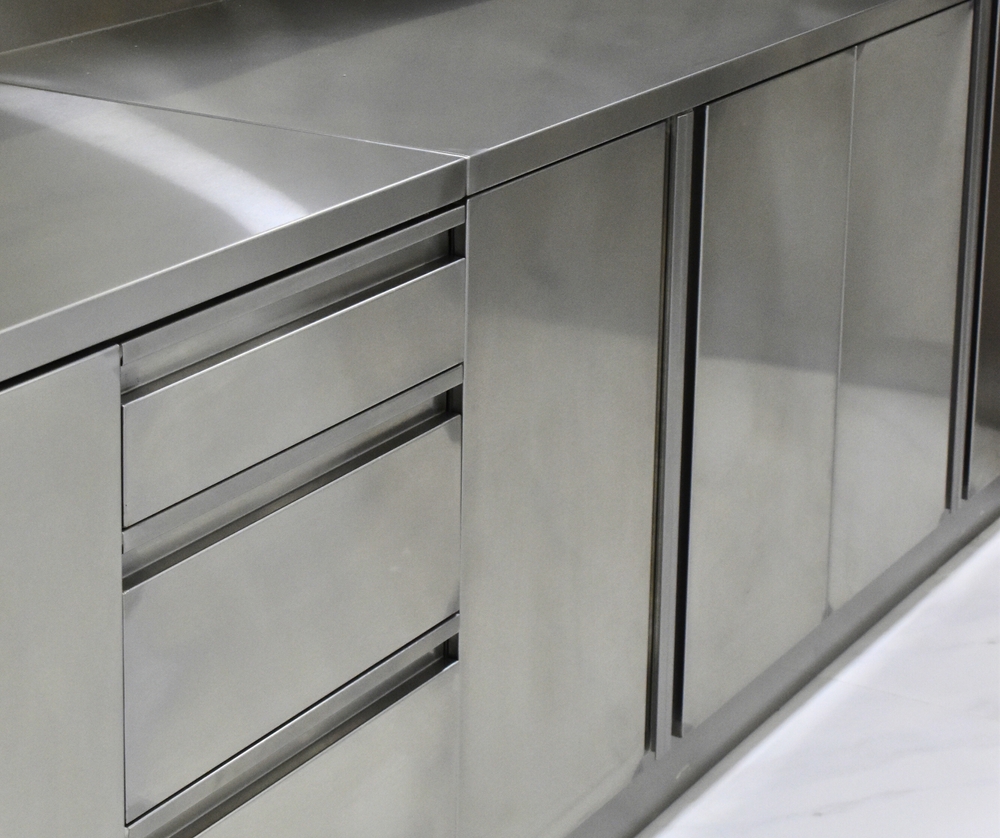
From basic lab furnishings to specialized equipment, stainless steel’s unique combination of hygienic and precise qualities is used in various applications that demand both cleanliness and accuracy. Its versatility and reliability have made it an indispensable material in ensuring the smooth operation of modern laboratories.
1. Common Stainless Steel Lab Equipment
Stainless steel is the material of choice for many essential pieces of lab equipment. Some of the most common applications include:
- Countertops and Workbenches: Stainless steel countertops and workbenches provide a smooth, non-reactive surface that is easy to clean and maintain. These surfaces are ideal for handling chemicals, biological samples, and other materials where contamination must be avoided.
- Storage Cabinets and Shelving: Stainless steel storage cabinets and shelving units are durable and resistant to corrosion, making them perfect for storing chemicals, reagents, and sensitive equipment. Their strength ensures that they can safely support heavy loads without warping or degrading over time.
- Fume Hoods and Ventilation Systems: In environments where hazardous fumes and vapors are present, stainless steel fume hoods and ventilation systems are essential. These systems provide a controlled environment that protects both the laboratory personnel and the integrity of experiments, while the stainless steel construction ensures longevity and resistance to corrosion.
- Lab Sinks and Wash Stations: Stainless steel sinks and wash stations are a common sight in labs, providing a durable, hygienic surface for cleaning glassware, instruments, and other equipment. Their resistance to chemicals and easy-to-clean nature make them ideal for maintaining a sterile environment.
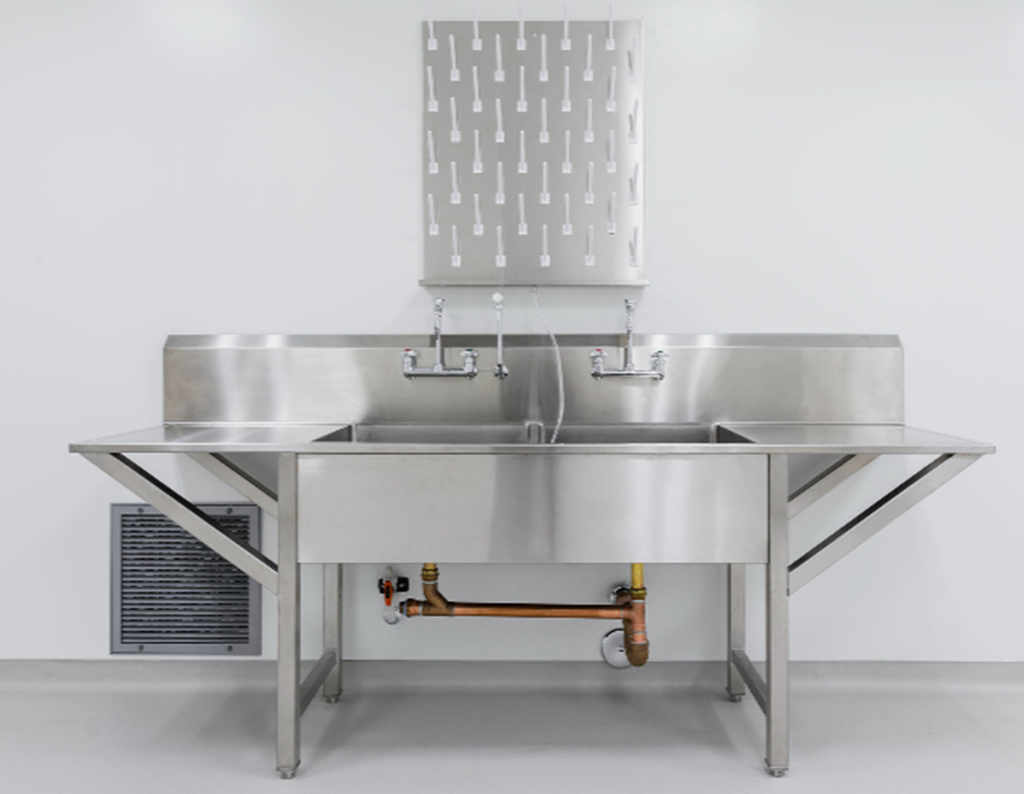
2. Industry-Specific Applications
Stainless steel’s versatility also allows it to be used in specialized applications tailored to the needs of specific industries:
- Pharmaceutical Labs: In pharmaceutical research and production, where purity and precision are paramount, stainless steel is used extensively in the manufacture of mixing vessels, reaction tanks, and tablet presses. Stainless steel lab equipment’s non-reactive properties ensure that the chemicals and compounds remain uncontaminated, leading to high-quality, consistent products.
- Biotechnology and Research Facilities: Stainless steel lab equipment is widely used in biotechnology labs, particularly in equipment like bioreactors, fermentors, and incubators. These applications require materials that can withstand rigorous cleaning and sterilization processes while maintaining a sterile environment.
- Food and Beverage Testing Labs: In food safety and quality control labs, stainless steel is the preferred material for equipment used in testing and analysis. Stainless steel lab equipment’s hygienic properties are critical in preventing cross-contamination, ensuring that food products meet safety standards.
3. Why Stainless Steel Lab Equipment is Favored in These Industries
The widespread use of stainless steel in these diverse applications is driven by its ability to meet the stringent demands of laboratory environments. Its resistance to corrosion, ease of cleaning, and non-reactive nature make it an ideal material for industries where hygiene and precision are crucial.
Additionally, the durability of stainless steel lab equipment ensures that lab equipment has a long lifespan, providing a cost-effective solution for laboratories that require reliable and consistent performance.
To summarize, stainless steel is a versatile material that supports a wide range of applications in laboratories across different industries. Whether it’s in the form of basic furnishings or specialized equipment, stainless steel’s properties ensure that labs can maintain the high standards of cleanliness and precision required for successful scientific work.
Innovations in Stainless Steel Lab Equipment
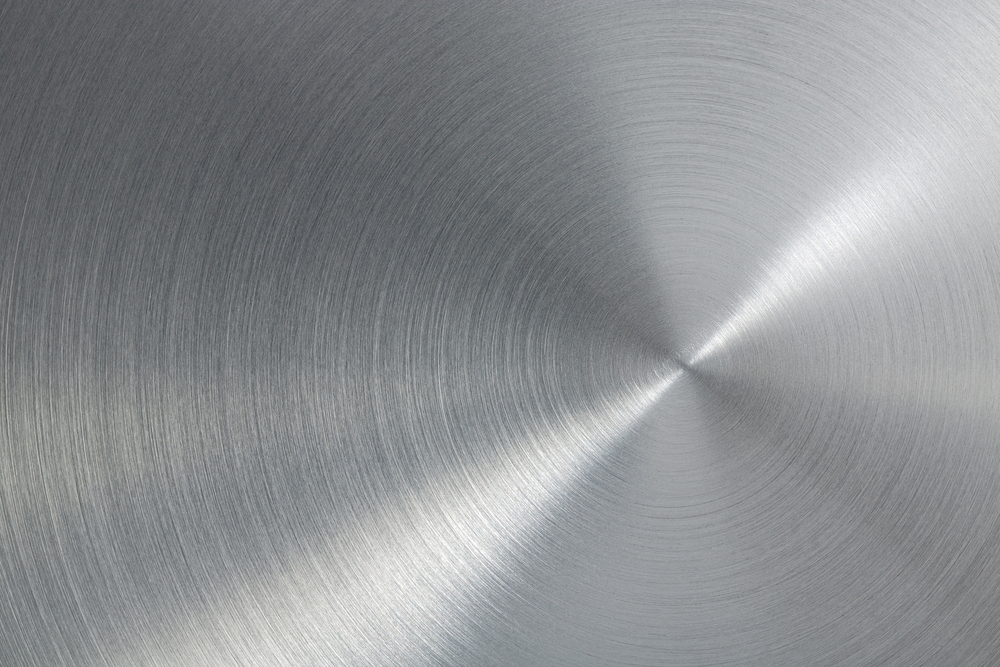
As the demands on laboratory environments continue to evolve, so too does the technology behind stainless steel lab equipment. Innovations in materials science and engineering are enhancing the already impressive properties of stainless steel, making it even more suited to the rigorous needs of modern laboratories.
These advancements are driving improvements in hygiene, precision, and customization, ensuring that stainless steel remains at the forefront of lab design.
1. Advances in Stainless Steel Technology
Recent innovations have led to the development of new stainless steel alloys and coatings that enhance the material’s performance in laboratory settings.
- Advanced Alloys: New formulations of stainless steel are being engineered to offer even greater resistance to corrosion and wear. For example, duplex stainless steels combine the benefits of austenitic and ferritic stainless steels, which differ in their chemical composition and crystalline microstructure.
The result is a material with enhanced strength, durability, and resistance to chemical attack. These advanced alloys are particularly useful in environments where harsh chemicals or extreme temperatures are common, further extending the lifespan of lab equipment.
- Specialized Coatings: The introduction of antimicrobial coatings for stainless steel surfaces is another significant innovation. These coatings inhibit the growth of bacteria and other pathogens, adding an extra layer of protection in environments where sterility is crucial. Antimicrobial stainless steel is especially valuable in healthcare and pharmaceutical labs, where preventing contamination is a top priority.
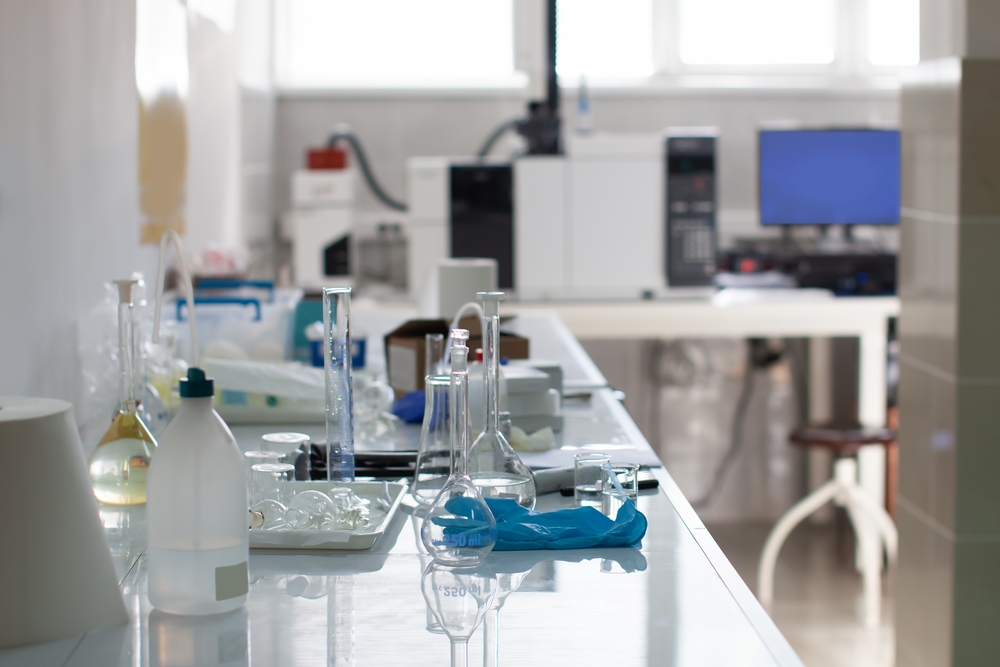
2. Customization for Specialized Labs
As laboratories become more specialized, the need for customized stainless steel lab equipment has grown. Manufacturers are now offering tailored solutions that cater to the specific requirements of different lab environments.
- Custom Fabrication: Stainless steel lab equipment can now be custom-fabricated to fit the unique dimensions and configurations of individual laboratories. Whether it’s a custom-sized fume hood or a uniquely designed storage unit, these custom-tailored solutions enhance the functionality and efficiency of the lab.
Customization also allows for the integration of additional features, such as built-in sinks, specialized storage compartments, or equipment mounts, all crafted to meet the exact needs of the lab.
- Modular Designs: The trend toward modular lab equipment is another area where stainless steel shines. Modular systems allow laboratories to easily reconfigure their workspaces as needs change, providing flexibility without sacrificing durability or hygiene.
Stainless steel lab equipment’s inherent strength and ease of assembly make it ideal for modular designs, which can include everything from adjustable shelving units to interchangeable workstations.
3. How Innovations Improve Hygiene and Precision
These innovations in stainless steel lab equipment are not just about improving the material itself—they also directly contribute to better hygiene and precision in the lab.
- Enhanced Cleanliness: Antimicrobial coatings and advanced alloys that resist contamination are crucial for maintaining sterile environments. These innovations help laboratories adhere to stringent cleanliness standards, reducing the risk of cross-contamination and ensuring that experiments and processes are not compromised.
- Greater Accuracy: Custom fabrication and modular designs allow laboratories to create workspaces that are perfectly suited to their needs. This tailored approach reduces inefficiencies and enhances the precision of experiments, as equipment is designed to optimize workflow and minimize errors.
As technology continues to advance, stainless steel will undoubtedly remain a critical component in the design and operation of cutting-edge laboratory environments.
Additional Reading: Why Metal Lab Tables Are a Staple in Any Research Facility
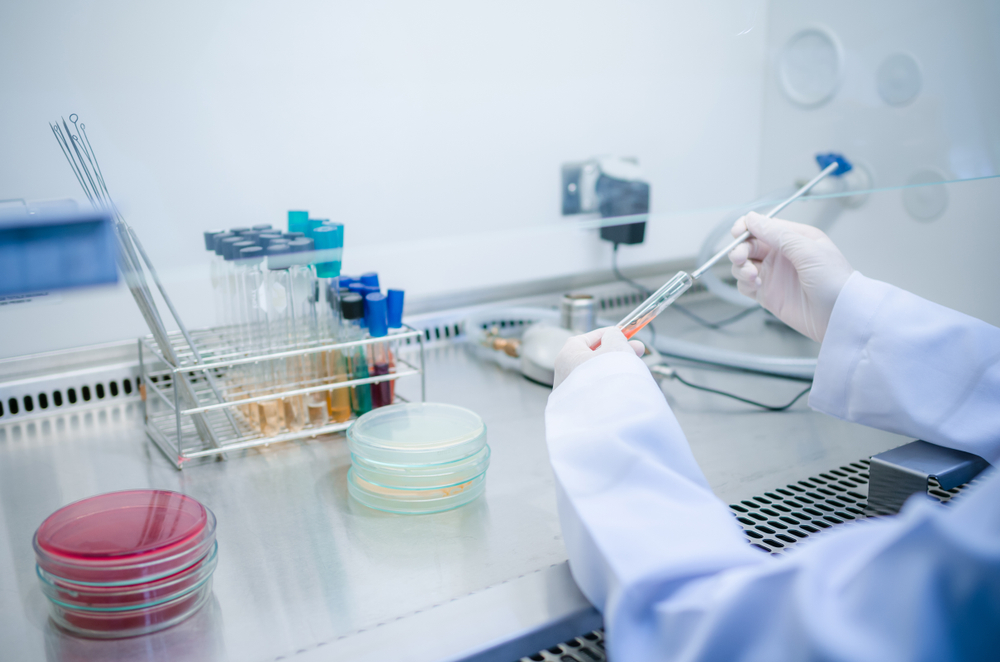
Long-Term Cost Efficiency
While the initial investment in stainless steel lab equipment may seem higher compared to other materials, its long-term cost efficiency makes it an economically wise choice for laboratories. The durability, low maintenance, and longevity of stainless steel contribute to significant savings over time, ensuring that it remains a cost-effective option for lab environments that demand reliability and high performance.
1. Durability Equals Cost Savings
One of the primary factors contributing to the cost efficiency of stainless steel lab equipment is its exceptional durability. Stainless steel is designed to withstand the rigors of daily use in a laboratory, from exposure to harsh chemicals and extreme temperatures to physical wear and tear.
Unlike other materials that may degrade, rust, or break down over time, stainless steel lab equipment retains its structural integrity and appearance for years, even in the most demanding conditions.
This durability translates directly into cost savings. Laboratories that invest in stainless steel lab equipment can expect a longer lifespan for their equipment, reducing the need for frequent replacements. This longevity not only lowers capital expenditure but also minimizes disruptions to laboratory operations, as equipment remains functional and reliable for extended periods.
2. Reduced Maintenance Costs
Maintenance is another area where stainless steel lab equipment offers significant cost advantages. Stainless steel’s resistance to corrosion, staining, and damage from chemicals means that it requires minimal upkeep compared to other materials. Regular cleaning with simple cleaning agents is often sufficient to maintain its appearance and functionality, eliminating the need for specialized or costly maintenance procedures.
Because stainless steel lab equipment does not easily degrade, the costs associated with repairs and part replacements are also significantly reduced. Lab equipment stays in optimal condition, preventing the accumulation of grime, corrosion, or bacteria that could lead to costly repairs or replacements. This low maintenance requirement further contributes to the overall cost efficiency of stainless steel.
3. Energy Efficiency and Environmental Impact
Stainless steel’s energy efficiency and recyclability also play a role in its long-term cost efficiency. Manufacturing stainless steel lab equipment requires less energy than producing equipment from some other materials, and its durability means that fewer resources are needed to replace or repair equipment over time.
Moreover, stainless steel is 100% recyclable, which can lead to savings in disposal costs and reduce the environmental impact of laboratory operations.
For laboratories seeking to minimize their carbon footprint, investing in stainless steel lab equipment supports sustainability goals while also providing economic benefits. The long lifespan and recyclability of stainless steel make it a responsible choice that aligns with both financial and environmental objectives.
4. Value Over Time
When considering the total cost of ownership, stainless steel lab equipment offers substantial value over time. The initial investment is offset by the long-term savings in maintenance, replacements, and energy consumption. Laboratories that choose stainless steel can expect to see a return on investment through reduced operational costs and the extended life of their equipment.
Clearly, the long-term cost efficiency of stainless steel lab equipment makes it an excellent investment for laboratories aiming to combine performance with financial prudence. Its durability, low maintenance requirements, and environmental benefits ensure that stainless steel continues to be a smart, cost-effective choice for lab environments that prioritize both quality and value.
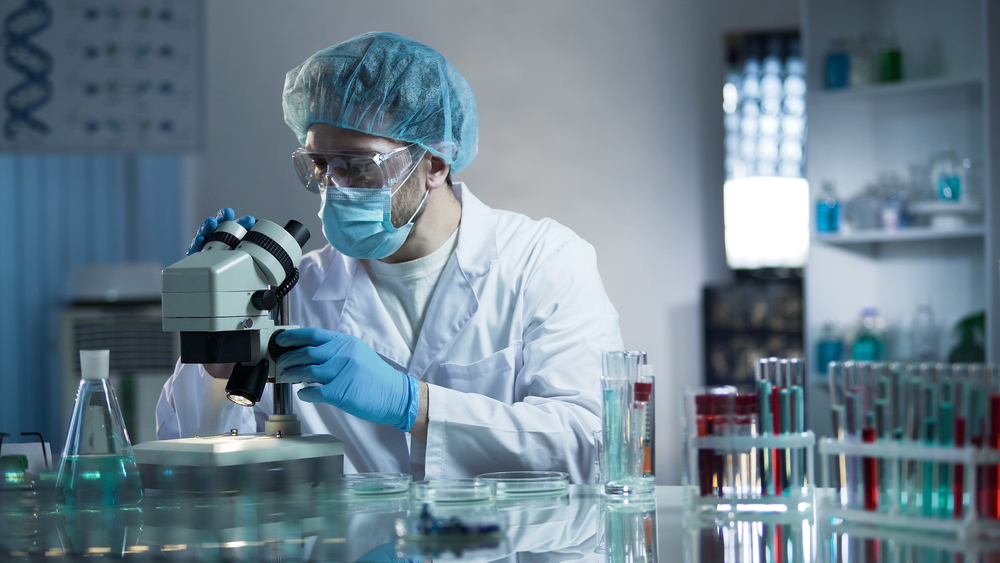
Conclusion
Stainless steel has proven itself to be an indispensable material in the design and operation of modern laboratories. Its combination of hygienic properties, precision-enhancing features, and long-term cost efficiency makes it the go-to choice for lab equipment across various industries.
From ensuring the integrity of experiments to providing a clean and safe environment, stainless steel meets the exacting demands of today’s laboratories. As innovations continue to enhance its capabilities, stainless steel will remain a cornerstone of laboratory design, offering unmatched reliability and value.
Investing in stainless steel lab equipment is not just about meeting current needs—it’s about future-proofing your laboratory for years to come. Whether you are designing a new lab or upgrading existing facilities, choosing stainless steel ensures that you are equipping your lab with the best materials available, capable of supporting the rigorous demands of scientific research and development.
Selecting a team of accredited experts in lab design, manufacture, and installation of stainless steel lab equipment is crucial to ensuring that your laboratory meets the highest standards of safety, efficiency, and compliance with regulations such as ANSI, OSHA, and SEFA.
Their expertise guarantees that every aspect of your lab is meticulously planned and executed, providing a reliable foundation for cutting-edge research and development.

